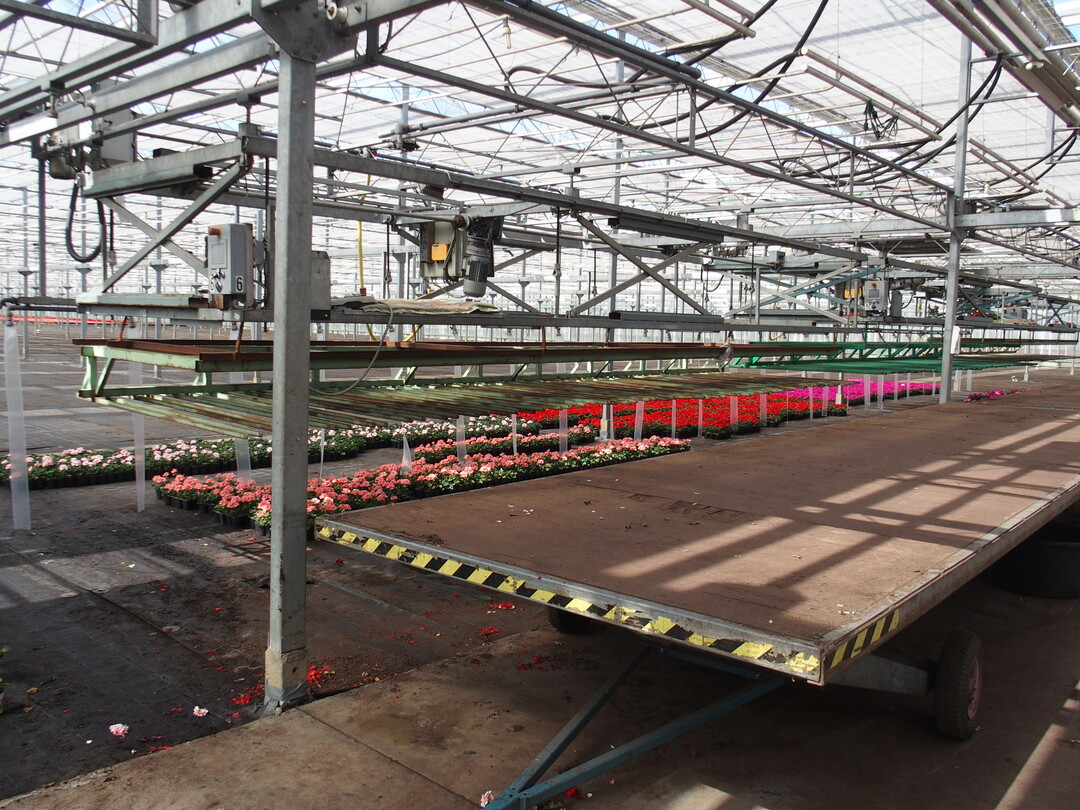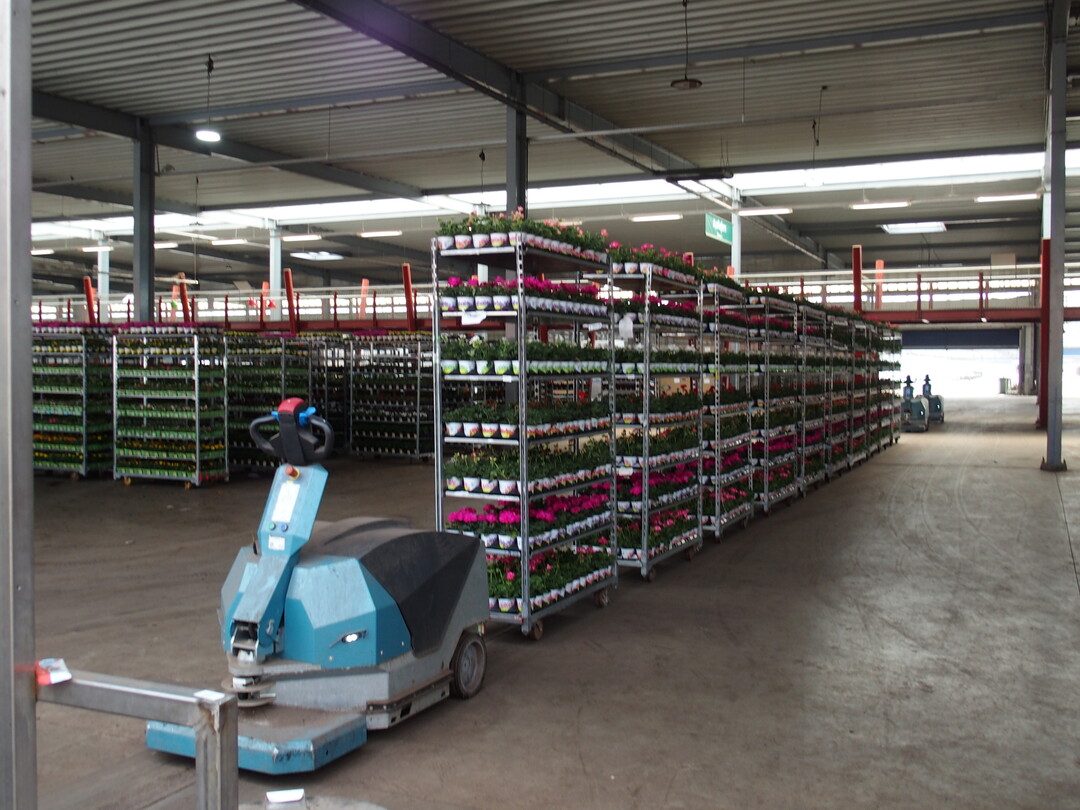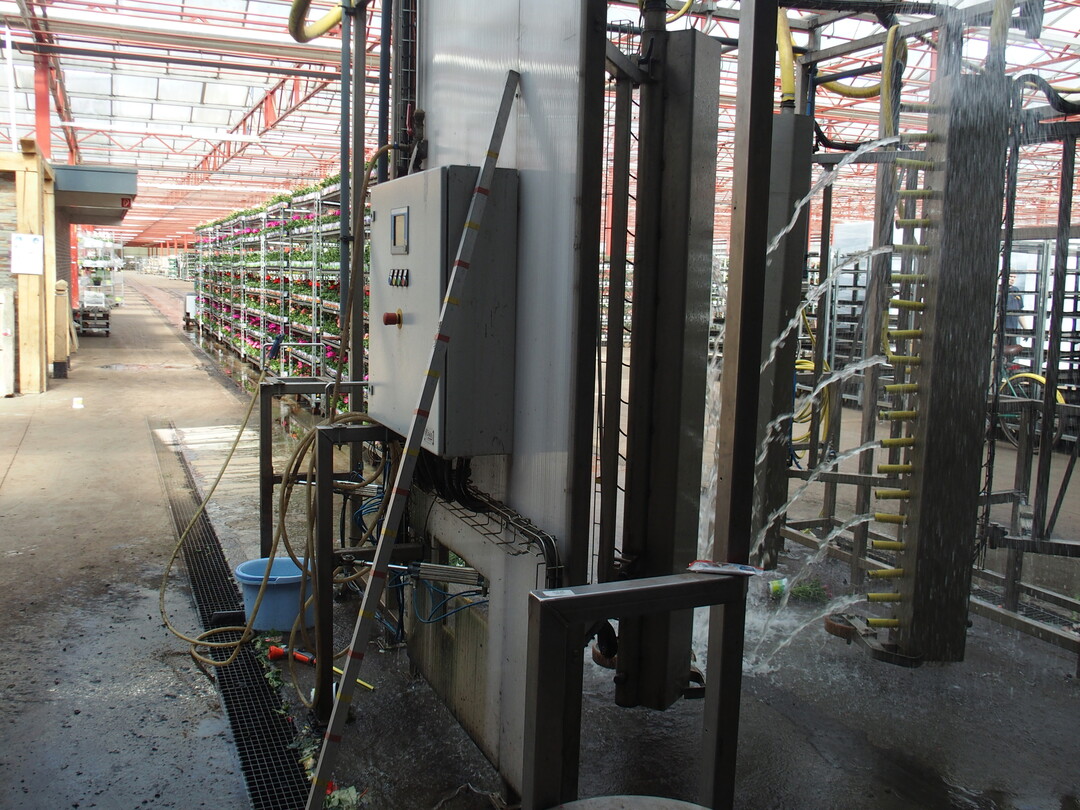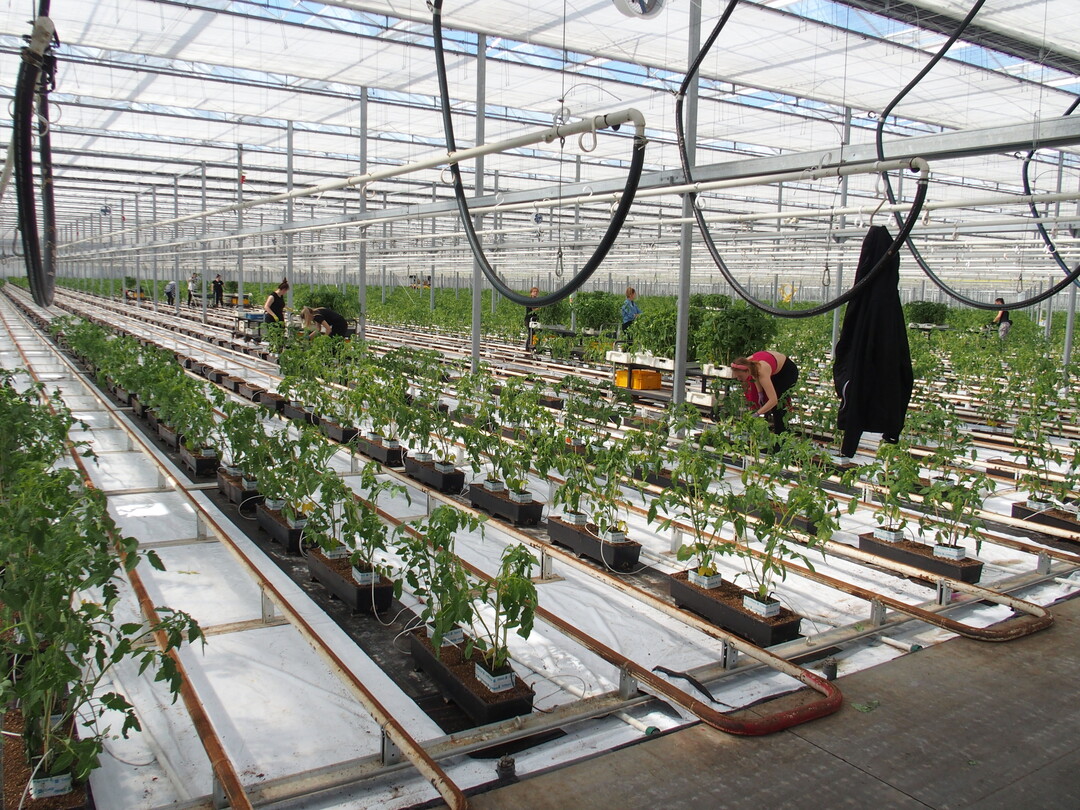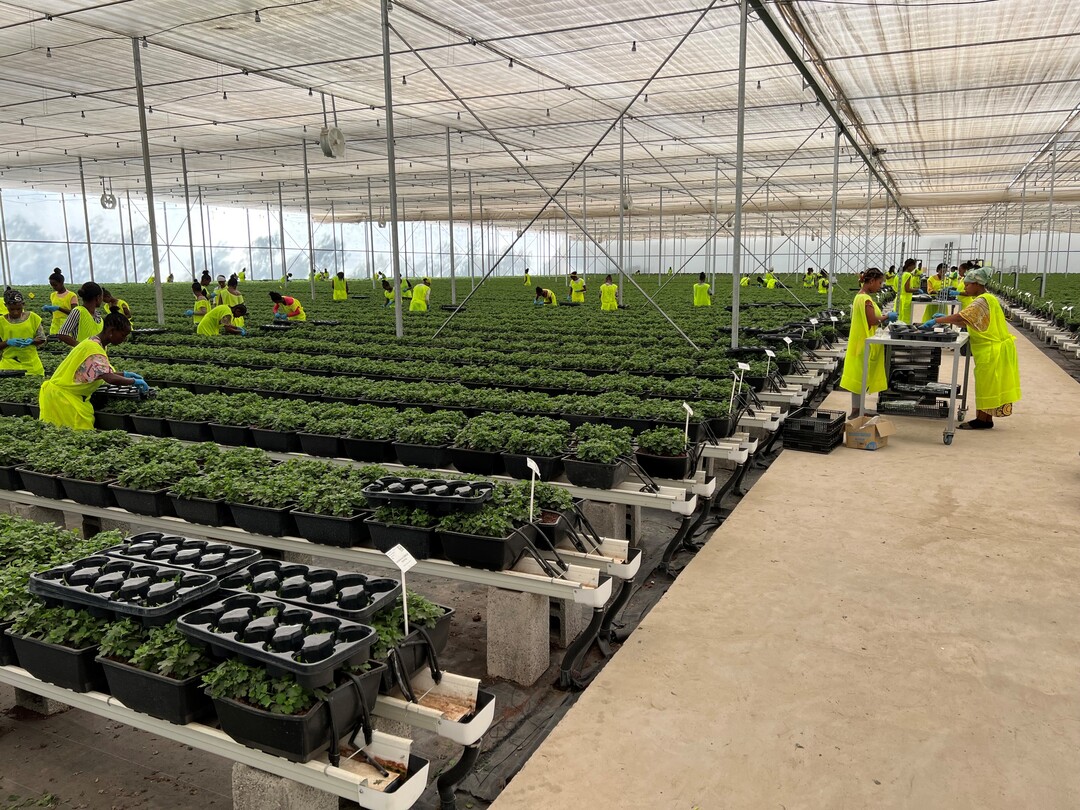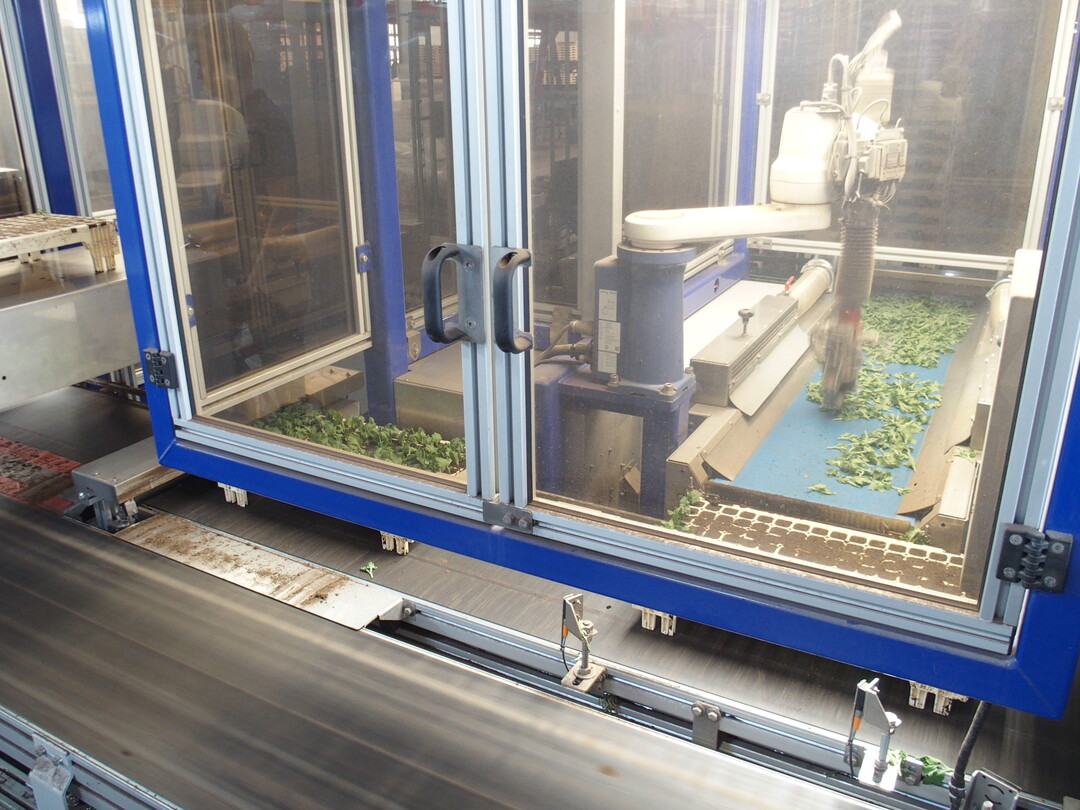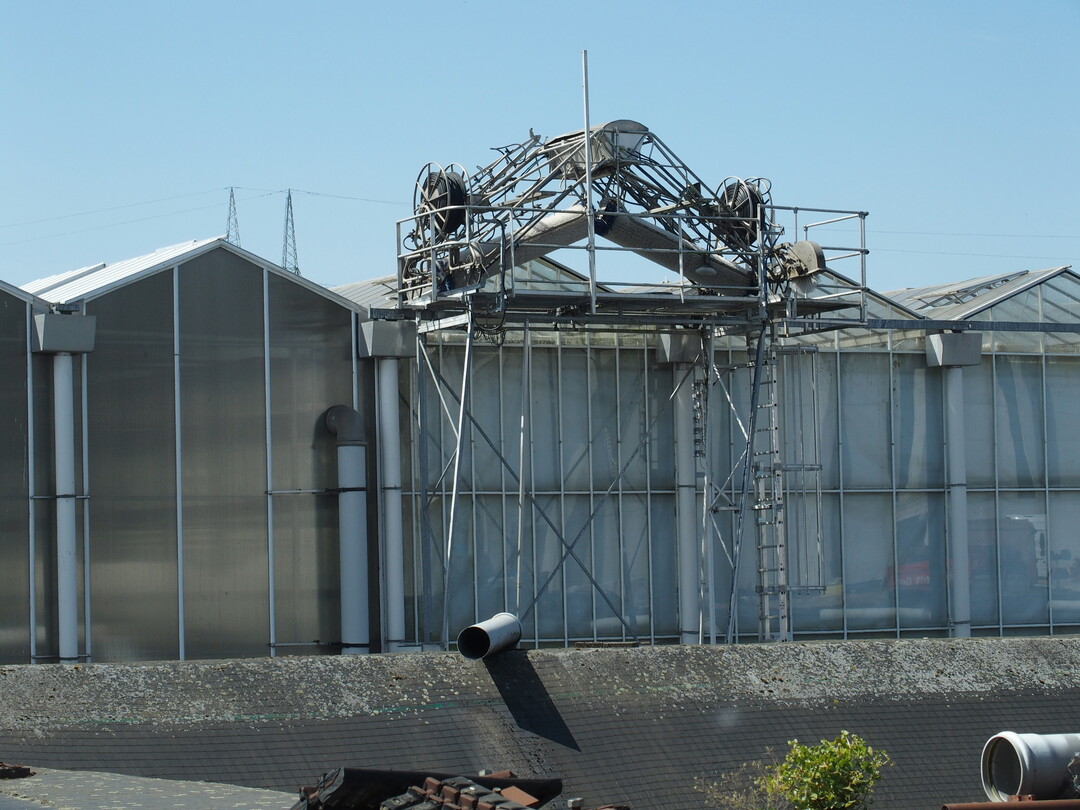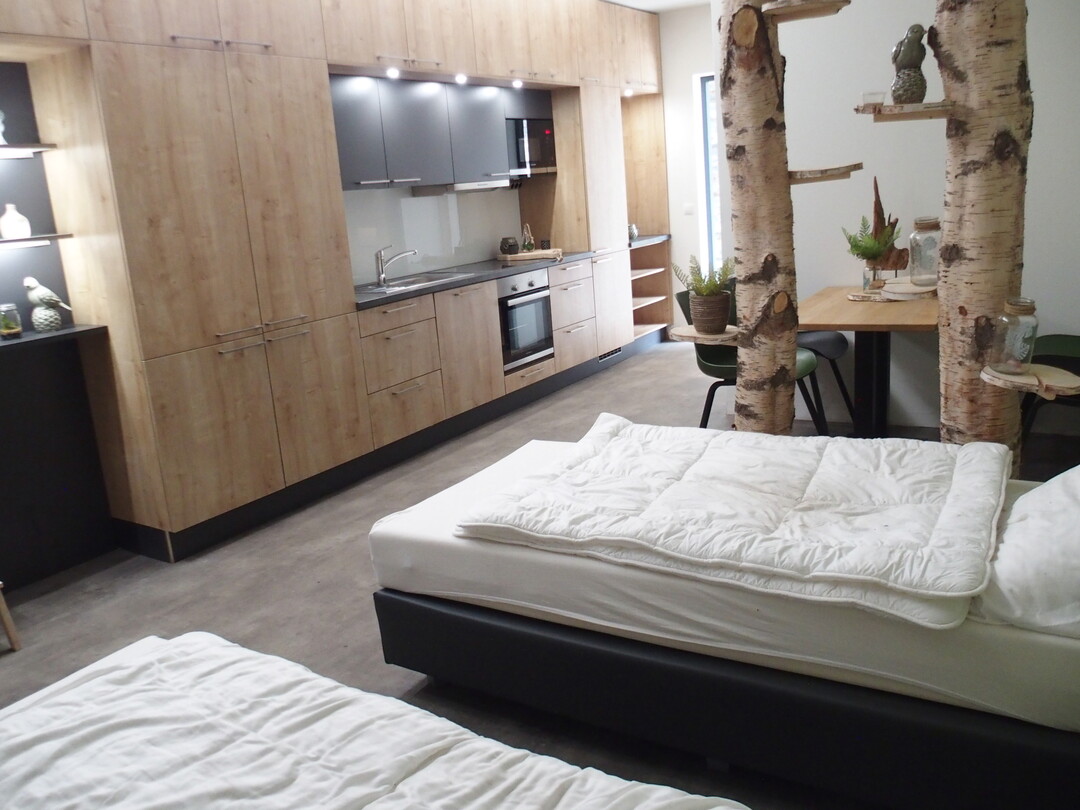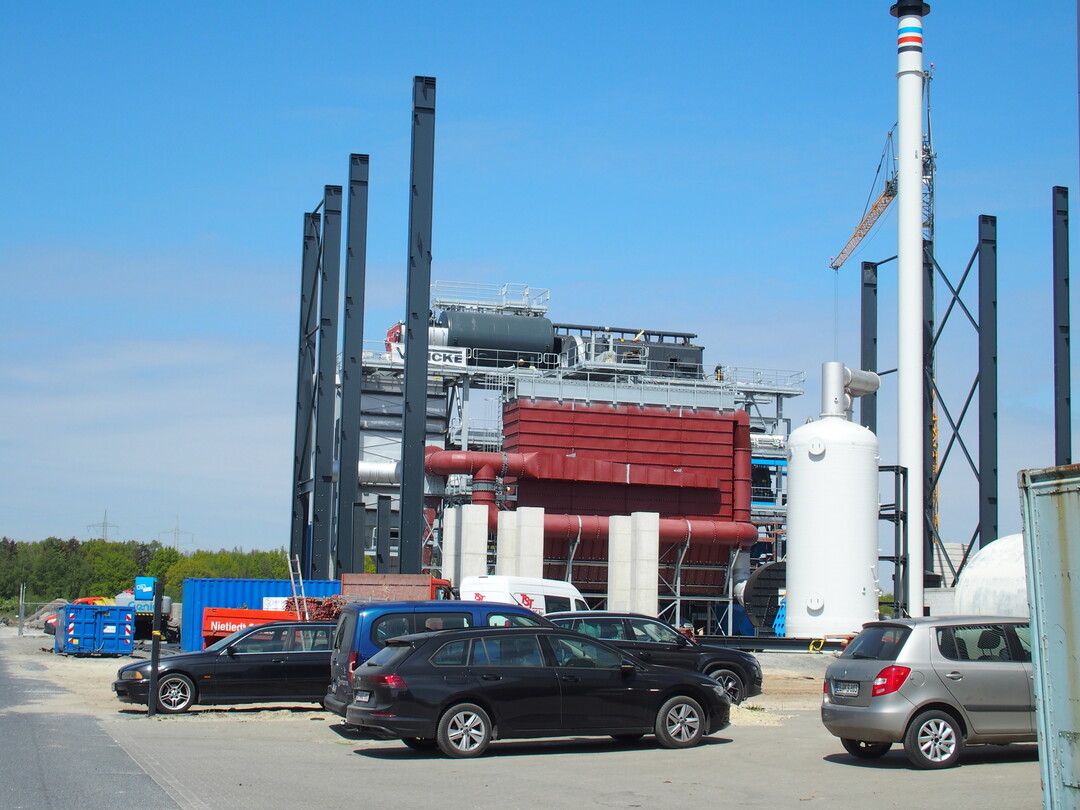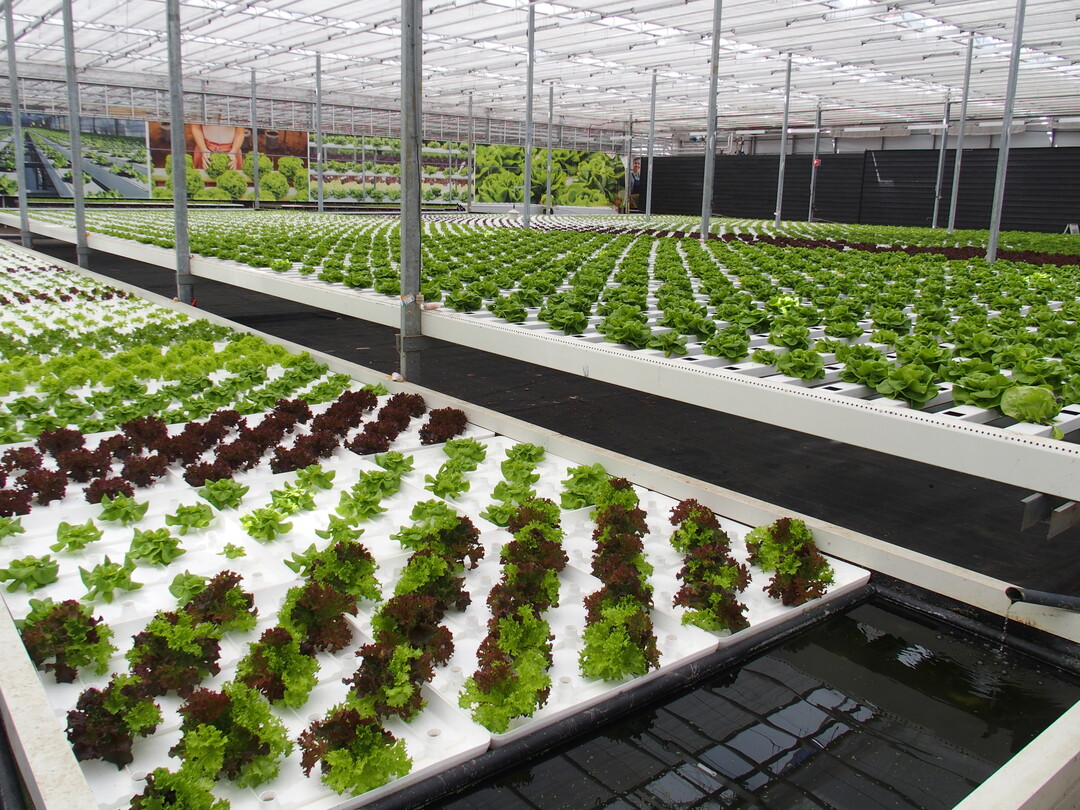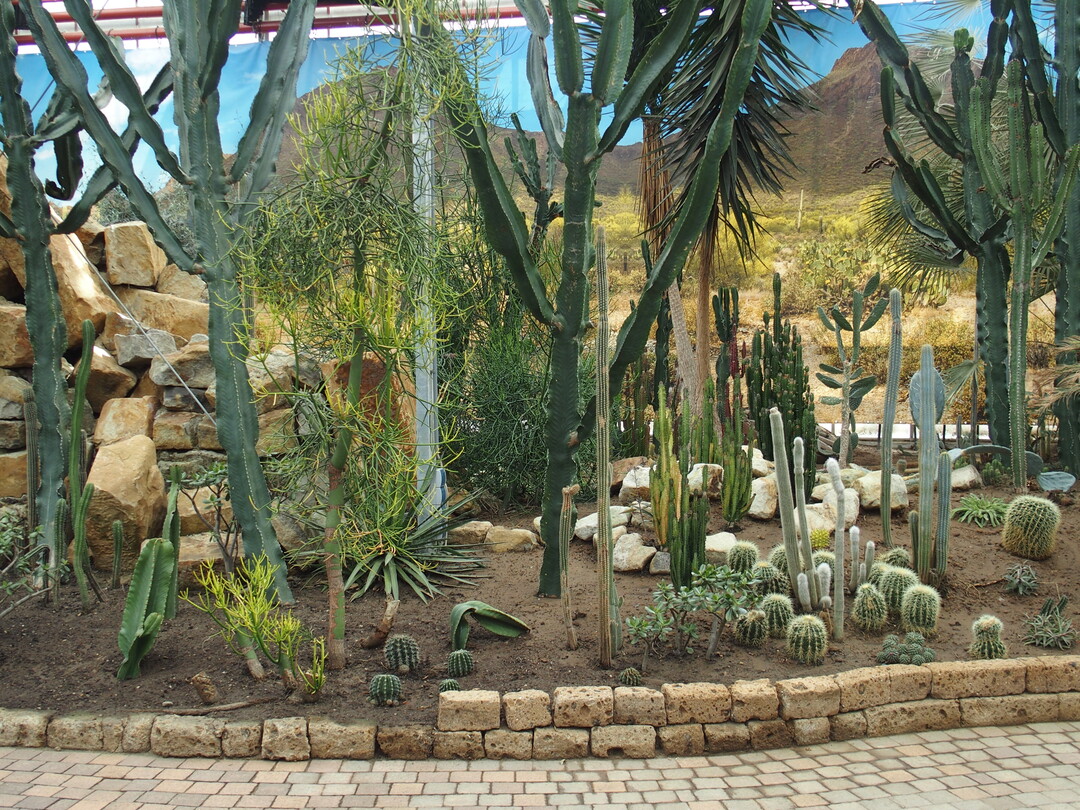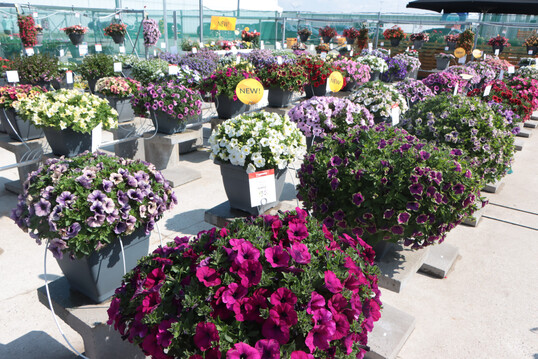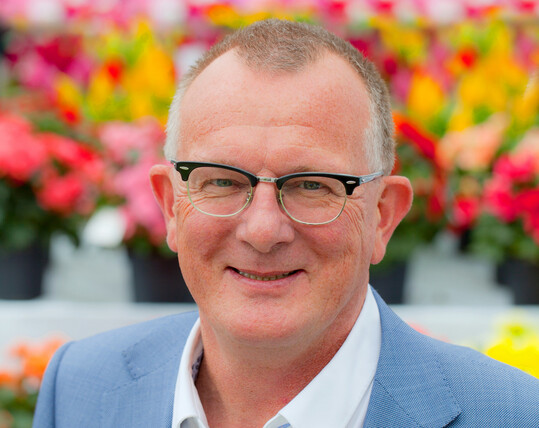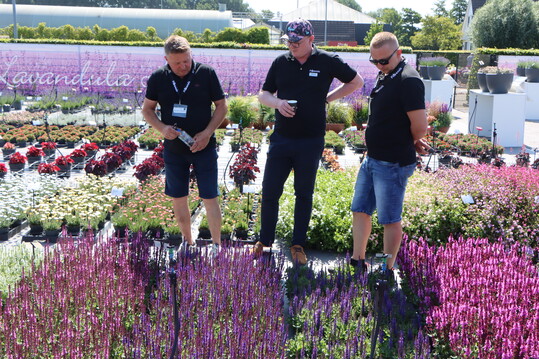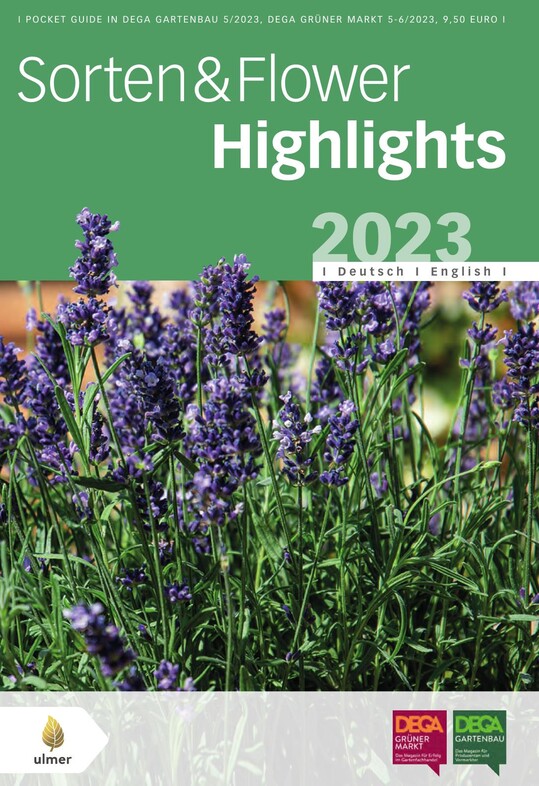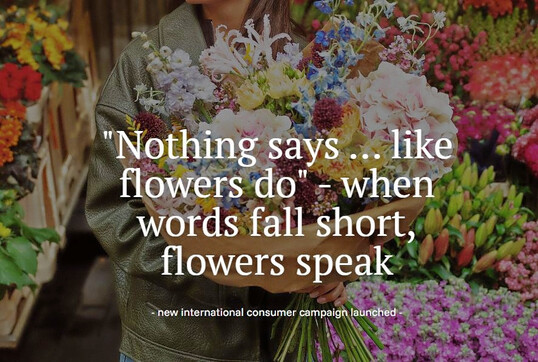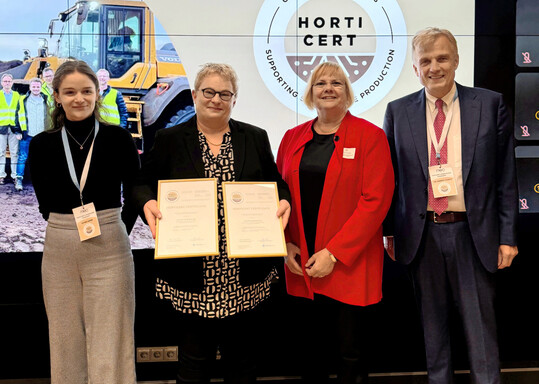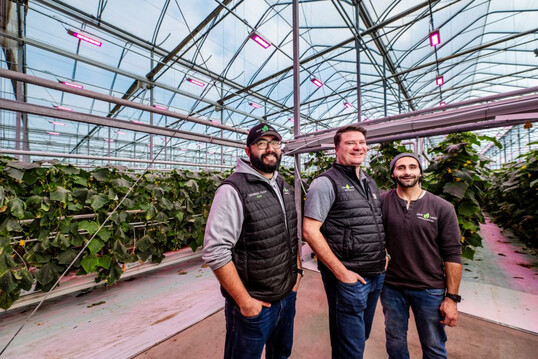First bedding plants, then tomatoes
Since 2004, the family business Emsflower of the Dutch Kuipers family in Emsbüren has continued to grow. At that time, Bennie Kuipers and his sons Tom and Bart were already producing 500 million bedding and balcony plants. German horticultural products are in demand and land for new greenhouses is scarce in the Netherlands. An article from the German trade magazine DEGA GARTENBAU.
- Published on
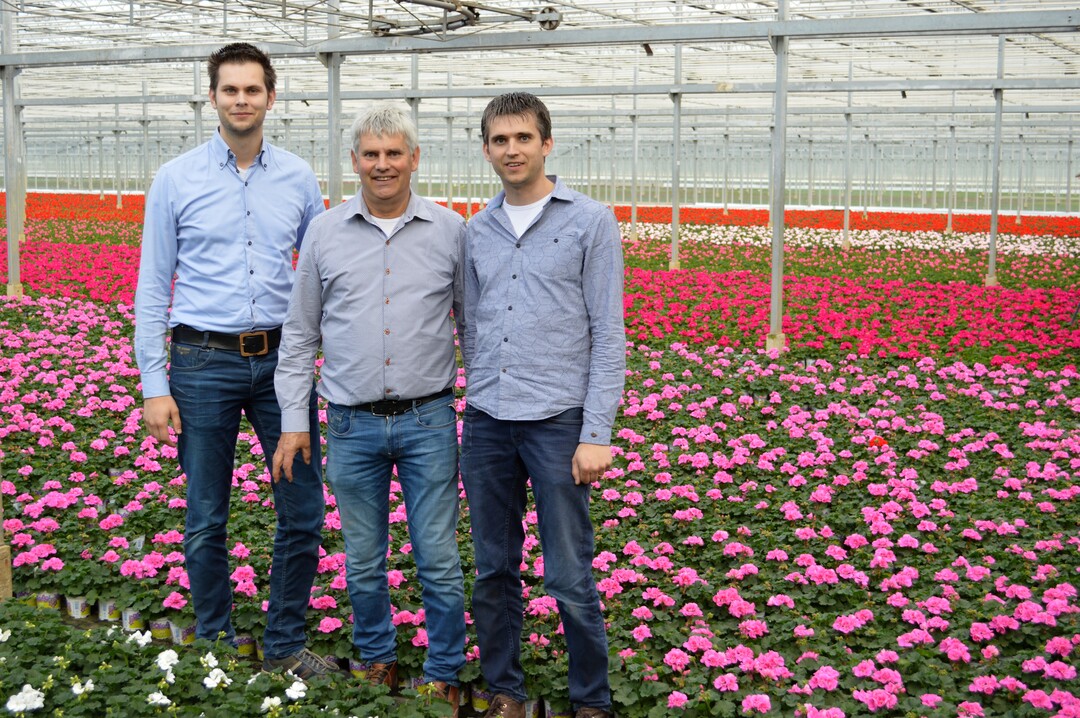
Emsbüren is quickly accessible from the Dutch headquarters in Lutte, located between Oldenzaal/NL and the German-Dutch border, via the A30 motorway. With a total of 88 hectares of greenhouse space, 64 of which are at the Emsbüren site, Emsflower is probably the largest producer of bedding plants in Germany, possibly even in Europe. "Growing with the customers" is the motivation for the immense production areas.
The long, straight and wide paths through the extensive Venlo greenhouses with 5.5 m standing wall heights can be easily managed by bicycle. Beware of the tractors driving autonomously via induction loops, pulling long rows of CC containers behind them. Packed in the greenhouse, the bedding plants cultivated on the ground reach the large working and shipping hall. On the way, the CC containers pass through an automatic watering unit to ensure that the plants are well taken care of on their journey.
Larger pots and own cultivars
The quantity of ornamental plants produced is slightly down. On the other hand, the pots are getting bigger, explains Tom Kuipers during a tour. Where there used to be up to 250 plants/m² in packs of 10, there are now more like 40 to 50 pot plants/m². However, geraniums in packs of 6 are also included. The standard range of bedding and balcony plants is produced.
For the last four years, the company has been breeding its own plants. Emsflower has its own Pelargonium zonale and Osteospermum varieties. The breeder Rosalien Olde Daalhuis has been with the company for a long time and used to be responsible for the show garden and the evaluation of the varieties planted there.
The show garden, which used to be open to the public for an entrance fee, is now open to the public in a somewhat smaller format next to the Gartenwelt garden center.
The main reason for the company's own breeding is not so much to save on the license fee for third-party varieties. Rather, it's about large uniform production quantities, he says. "Our customers order red, pink and white geraniums of the same quality. To get the quantities together, we used to cultivate around twelve different red varieties, all with slightly different cultivation characteristics, a huge challenge for the growers. With our own breeding, we now only need one red variety, which allows us to deliver much more consistent quality," says Tom Kuipers. "Also, it's good to have everything under control from the beginning. If there are problems in our cuttings production, we can react promptly," Kuipers says.
Value in the selection of new cultivars is placed on low inhibitor use in addition to garden quality. The red Zonale 'Joep', which branches well and requires little inhibitor, is named after the son of the culture manager, while the white 'Nick' is named after Tom Kuipers' son. Healthy elite plants of our own varieties for mother plant establishment are produced by an outside laboratory.
Own southern production
For the first time in 2022, our own varieties from cuttings production are in cultivation in Ethiopia. Previously, there was a cooperation for cuttings production in Tanzania. In 2021, the Kuipers family invested in its own 7-ha production site for cuttings in Ethiopia. Here the cuttings of Pelargonium, Osteospermum , Chrysanthemum and Poinsettia are produced. Currently, this mother plant location is being expanded by another 2 ha. The foil greenhouses have already been ordered from a Spanish company and are to be erected this year - that is the plan. Partly, cuttings for other companies are also produced here.
Just now, 1.7 million chrysanthemum cuttings arrived from Ethiopia in six colors. The shipment started on Monday afternoon, and on Wednesday morning the cuttings will already be in Emsbüren to be put into young plant boxes by several plugging robots.
Except for the pelargoniums, all bedding plants are processed with plugging robots.
Vegetables for the trade
In 2012, the company Emsland Gemüse, which belongs to the Emsflower group of companies, was established for the production of tomatoes. Over the summer to fall, tomatoes are cultivated for the regional food retail trade, mainly in Lower Saxony and North Rhine-Westphalia. Over the winter months until spring, bedding and balcony plants are grown again on the same area. This combination allows more employees to be permanently employed throughout the year and increases area productivity.
Where on one side of the greenhouse the last bedding plants are still almost ready for shipping, on the other side they are already being converted for vegetable production. Films for tomato cultivation are already in place on the cleaned and disinfected areas.
Then the heating pipes are lowered, on which the work and harvest trolleys roll between the crop rows. The culture boxes, similar to balcony boxes, equipped with small feet and used several times, contain peat-free substrate, mainly rice husks, wood fiber and coco from Horticoop.
Drip irrigation hoses provide watering. Excess water runs into the drainage system laid beneath the Mypex film, exactly under the culture boxes, and is treated centrally. An intermediate agrozone-ozone system purifies the water and neutralizes pesticide residues.
The conversion for tomato cultivation, including cleaning and disinfection, takes only three days. Fruiting vegetables can be grown on a maximum of 18.7 hectares, only in greenhouses with lowerable heating pipes.
Cultivated are good tasting tomatoes like 'Literno' and 'Brioso' to stand out in the market. "We cannot differentiate ourselves with cheap products," says Tom Kuipers. The tomatoes are propagated and grafted on the Dutch farm, currently in rockwool blocks, but this is not intended to be a permanent solution. On a trial basis, tomato seedlings have already been planted in culture boxes with peat-free substrate.
A light and a black shade are installed in each of the greenhouses. The latter is used, among other things, for chrysanthemums to give short day.
In the areas that cannot be converted for fruiting vegetables, potted and multiflora chrysanthemums, lavender and later poinsettias, among others, are planted over the summer.
Where possible, beneficial insects are used for pest management. Regular monitoring of yellow glue boards is necessary to apply beneficial insects in a timely manner.
Marketing through well-known chains
Almost all well-known supermarket chains receive ornamental plants from Emsflower. While ornamental plant production in general benefited from high prices during the Corona pandemic, this was hardly the case with Emsflower, as production is always negotiated one year in advance at a fixed price. This business model prevents extreme outlier situations, both up and down. "On our scale, sales via auction are not possible if you don't want to jeopardize the safety of the employees as well," Tom Kuipers reasons.
The fruit vegetables produced are also marketed with regional logos via all the major supermarket and DIY store chains. Most of it stays in Lower Saxony, some is also marketed in neighboring regions.
While the ornamental plants are marketed to a large extent directly to the chains, the tomatoes are marketed to the same chains to 100% via Landgard. Kuipers justified this with the volume, which is too small with regard to tomatoes. "This is where Landgard offers an advantage. We don't have to take care of the marketing ourselves and don't need our own logistics," Kuipers said. For the much larger ornamental plant cultivation, own marketing channels are worthwhile, although here, too, a part is marketed via Landgard.
In 2021, tomatoes were grown on a good 18 ha, this year only 12.7 ha, in order not to take risks due to the increased heating costs. This is because the tomatoes are sold via Landgard according to the current market price in each case. In addition, there is a lack of greenhouse space this year due to the sale of the 17-ha main farm in Denekamp/NL, which is currently being newly constructed at the Emsbüren site.
Another reason to exercise caution is restructuring at Landgard, which must be awaited. Due to the departure of some large tomato producers and their establishment of the new producer organization Landfrisch, which went to market at the beginning of 2022, the situation on the tomato market remains to be seen, he said. The structures will have to find themselves anew.
Independent of external energy
Emsflower's goal is independence from public energy supply. The company has a wood-fired power plant with 1.1 MW of electrical and 8 MW of thermal capacity that went into operation in 2009. When landscape wood is burned, steam drives a turbine that produces electricity. At the same time, the heated water is used to heat the greenhouse.
Two independently operating energy sources would be interesting. Geothermal energy seems to be a promising solution at this location without being dependent on permanent deliveries of fuel.
The geothermal project, which was quite advanced in planning a few years ago, would have required an investment of at least 40 million. "In Germany, in contrast to the Netherlands, there is no financial backing for such projects," says Tom Kuipers, explaining the project, which has been put on hold for the time being but not yet completely discarded.
Currently, a second, much more efficient wood-fired power plant is being built for 16 MW of thermal power and 4.1 MW of electrical power, which will also be operated with landscape-managed wood material. This means that the plant is oversupplied in terms of energy. The cogeneration plant currently under construction requires an investment of 20 million euros and is scheduled to go into operation in November 2022. Own consumption averages only 0.6 MW, so the large amount can be fed into the public power grid and receive the EEG subsidy for it. An adjacent open area is planned for further greenhouse buildings, so that their energy supply is also already secured. The old cogeneration plant receives four truckloads of landscaping material per day. The new plant is to be fed with seven truckloads per day.
A CO 2 extraction plant has already been prepared. In this flue gas scrubbing unit and the simultaneous flue gas condenser, CO 2 can be liquefied from the flue to sell biogenic CO 2 . The condensation of the flue gas also allows residual heat to be extracted. There is the idea of using this together with green hydrogen to produce synthetic, CO 2 -neutral green fuel.
All in all, this is a gigantic construction project, "only unfortunately a year too late in view of the already extremely high energy costs," says Tom Kuipers.
The Kuipers family not only deals in ornamental plants and vegetables, but also in energy. The 3,800 solar panels installed produce up to 1.5 MW of electrical power. In addition, the Gartenwelt garden center also has a similar number of solar panels.
Hotel standard for seasonal employees
The 150-room employee hotel, which will be completed in March 2020, will be used exclusively to accommodate seasonal employees. It offers high quality. The attractive rooms, designed for one to a maximum of three people, are of a good hotel standard with wifi, air conditioning, bathroom, kitchenette and dining area. According to the permit, they may not be rented out to others as hotel rooms if they are vacant, the municipality has stipulated this.
All employees are addressed family-like at eye level. The Kuipers family runs a family business. Many employees are relatives of the Kuipers family. At the head of the family business are the brothers Tom, responsible for production, and Bart Kuipers, mainly responsible for the garden center Gartenwelt. Both receive support from father Bennie Kuipers, who takes care of the construction activities.
Advertising for horticulture
What was originally only intended to give interested guests an insight into the production processes developed into a self-runner. The Emsflower visitor center has already been expanded several times and has become a popular destination for young and old. The tour of the show production greenhouse provides insights into modern ornamental plant and vegetable production. Butterfly garden, tropical garden, play paradise and restaurant make the visit worthwhile. The show greenhouse makes little profit, "we run it today mainly to attract new employees. We show that no gardener needs to run around with a watering can anymore," explains Tom Kuipers. In addition, the showhouse offers consumers transparency in production.
And the entrance ticket is accompanied by a voucher for the "Gartenwelt Emsbüren" garden center 400 meters away, which is also run by the Kuipers family.
The customers are already greeted by lively music in the giant parking lot. The loudspeakers sit on colorfully planted shelf stands that lead to the entrance of the garden center, Gartenwelt Emsbüren. The circular route there leaves nothing to be desired. Daily fresh bedding and balcony plants, nursery plants to ferns and indoor plants as well as a huge selection of accessories assortment can be found here.
Although the garden center is conveniently located directly at the Emsbüren freeway exit, it does not have a densely populated catchment area. But it has a lot to offer, including the Emsflower adventure park and show greenhouse, so that after five years, around 2019, it has been in the black.
Operating data Emsflower in Emsbüren
- History: The company was founded in 1954 by Jan Kuipers in Lutte/NL. 1977 Bennie Kuipers continues the parental business. In 1998, a new 10-ha farm is built in Fretzendorf north of Berlin, which was sold in 2016. 2004 Start of construction, 2006 opening of the production plant Emsflower in Emsbüren for bedding and balcony plants. 2014 Opening of the garden center Gartenwelt.
- Owners: brothers Bart and Tom Kuipers, father Bennie Kuipers.
- Production area: 88 ha greenhouse area, of which 64 ha in Emsbüren, 17 ha (13 ha net) in the parent company Denekamp/NL and 7 ha in Erica/NL. The Denekamp farm is sold as of September 1, 2022, for which 13 ha of new building in Emsbüren are planned.
- Since 2022 own cutting production site of 7 ha in Ethiopia.
- Employees: around 400, of whom 200 are full-time employees and seasonal employees from Eastern Europe.
- Marketing: directly to retail chains, Landgard
- Contact: www.emsflower.de; www.gartenwelt-emsbueren.de



